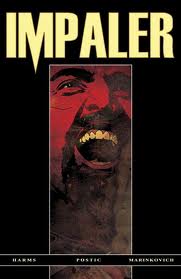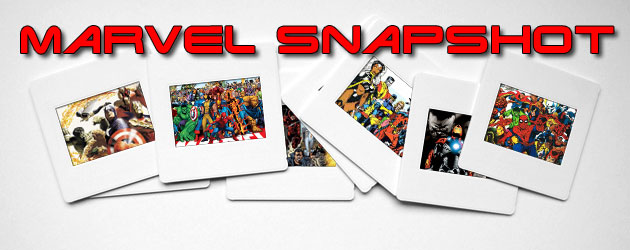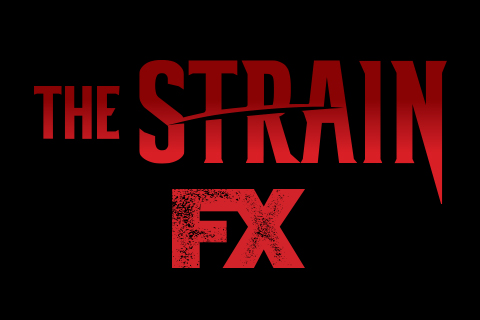Hi, My name is Martin, and I’m one of the newish reviewers here at ComicAttack. I’ve been reading comics since 1977 when my mom bought me the first six issues of Marvel’s Star Wars adaptation. When I’m not trying to make people buy stuff (I work in advertising), some of my interests are playing tabletop role-playing games and strategic board games, drinking craft beer and cocktails, going to Dodger games, listening to a variety of different types of music, and reading pretty much anything from fantasy to history to biographies. Today we have an interview with writer William Harms who wrote the graphic novel 39 Minutes which I recently reviewed here, and is also known for his working writing prose and for video games. William was kind enough to offer to be interviewed for ComicAttack and of course we took him up on it.

ComicAttack: For the benefit of our readers, can you tell us a bit about your background and some of the work you’ve done before?
William Harms: I started writing comics way back in the early 90s, first with Boneyard Press and then Caliber and Slave Labor Graphics. I took some time off away from comics, but in the last six or seven years I’ve written Impaler for Top Cow, published a couple graphic novels through AiT, and done a bunch of random things for Marvel, including Crossbones, Wolverine, and several issues of the AAFES comics that Marvel publishes specifically for the military.
In my day job, I write video games. I currently work at 2K Games as lead writer on an unannounced project.
CA: You are known for putting a horror-spin on your stories, turning them unexpected ways. 39 Minutes isn’t part of the “horror” genre, but many of the scenes are horrifying in their own way. What draws you to these types of stories?
 WH: I think it’s a combination of my worldview (I think the world is a pretty terrible place) and how I find my “in” when I’m working on a story. A lot of writers will start with the characters or a specific plot point, whereas I usually start with an act of violence. In 39 Minutes, for example, the first thing that came to me was this image of highly trained bank robbers setting a trap and killing all of the cops who respond to the robbery. From there, I developed the characters, why they were doing this, etc. But it all started with that image.
WH: I think it’s a combination of my worldview (I think the world is a pretty terrible place) and how I find my “in” when I’m working on a story. A lot of writers will start with the characters or a specific plot point, whereas I usually start with an act of violence. In 39 Minutes, for example, the first thing that came to me was this image of highly trained bank robbers setting a trap and killing all of the cops who respond to the robbery. From there, I developed the characters, why they were doing this, etc. But it all started with that image.
CA: Did you grow up on a diet of horror comics, movies, and stories? Or did it come later in life?
WH: I’ve always loved horror stories. I read The Shining when I was way too young (the same with Amityville Horror), and my mom is a big fan of horror movies, so I grew up watching them with her. I really discovered crime fiction when I was in high school and college, and I immediately gravitated toward the darker end of the genre, specifically the stuff by Jim Thompson. The Killer Inside Me is one of my favorite books.
CA: Let’s dig in to 39 Minutes – Where did your inspiration come from?
WH: The image of the bank robbers that I mentioned earlier was actually inspired by the North Hollywood robbery that happened in 1997. I saw a documentary on it and when I was watching it, I started thinking about how much worse it could have been. The two North Hollywood guys had the equipment, but thankfully not much in the way of training or a real plan. I imagined how different it might have played out if there were five or six of those guys, and they actually knew what they were doing and their escape plan consisted of more than “Get into the car and shoot anyone who gets in our way.”
CA: Much of the action and backstory in 39 Minutes involves the military and also the “independent contractors” that the U.S. Military has hired for the war in Iraq. Do you have a military background?
WH: I don’t. My dad was in the Navy during Vietnam and my grandfather was a Mari ne in World War II, so I’ve heard their stories. I actually thought long and hard about casting ex-military guys as the primary antagonists in 39 Minutes, but it was the only way the story really made sense. That said, I don’t consider them the villains in the story – the massive bureaucracy that pushes them down the road they follow is the real villain.
ne in World War II, so I’ve heard their stories. I actually thought long and hard about casting ex-military guys as the primary antagonists in 39 Minutes, but it was the only way the story really made sense. That said, I don’t consider them the villains in the story – the massive bureaucracy that pushes them down the road they follow is the real villain.
CA: The first issue of 39 Minutes came out back in 2010 as part of Top Cow’s “Pilot Season” – how long did you go between writing the first issue and then finishing the rest of the story?
WH: I think it was a year or so. The thing about Pilot Season is that it takes a while for the gears to crank back up. All of the one-shots need to be released, and then you need to give people time to vote for their favorite, and once you’ve won, it takes some time before everyone’s schedules align.
CA: Did you already have it completed plotted out?
WH: I had a rough outline of where the story would go. Or where I thought it was going to go.
CA: Did anything change between 2010 and now?
WH: Quite a bit changed. With the initial one-shot, you have two goals, which are to set up the story in a way that it hooks the reader and motivates them to vote for it. It’s really a unique thing in comics. Every new first issue is created to get the reader to buy the next one, but with Pilot Season there might not be a second issue.
When I sat down to write the rest of the story, the conflict between the military contractors and the Marines really came into sharper focus. The biggest change is that in the one shot, the Marines catch the contractors raping a girl; in the full story, they catch them executing innocent civilians to “send a message”. That scene really encapsulates the differences between the two: The military has rules that it must follow, while contractors aren’t bound to those same rules.
CA: The first issue was colored by Brian Buccellato, whereas issues #2-4 are colored by Linda Sejic. How do each of their styles add to the storytelling?
WH: If my memory is right, Brian used a “flatter” palette to ground the story and make it more realistic. Linda actually colored directly from Jerry’s pencils, which gave it a more painted look. I think both helped the story in different ways – Brian helped sell the violent nature of the story, while Linda helped humanize it.
CA: Was there a particular reasons for switching colorists?
WH: I actually don’t remember! If I had to guess, it had to do with people’s schedules.
CA: In your opinion, what are the biggest differences between writing creator-owned content (39 Minutes, Impaler) versus corporate characters like Captain America, Wolverine, etc.?
WH: The biggest difference is that with creator-owned, you are the gate keeper. Others weigh in (like your editor), but that feedback is generally designed to make your story better. With work-for-hire, the editor is the gate keeper. If you disagree with the editor about something, the editor always wins. It’s their sandbox, not yours.
That said, if you go into it understanding and appreciating the differences, it’s usually pretty smooth sailing.
 CA: How do you approach writing between comics, prose, and video games?
CA: How do you approach writing between comics, prose, and video games?
WH: My prose work tends to be much more personal, primarily because you have the space to explore specific areas of the story in greater detail. It’s an entirely different mindset, and when I’m working on prose, I really can’t be writing anything else. It kind of consumes me.
Writing video games is such a strange beast. In some ways it’s no different from writing anything else – you still need compelling characters, great plot twists, etc. – but since it’s wrapped around gameplay, it can all change at a moment’s notice. You might write a level or quest, and it’s the best thing you’ve ever written, but if the designers decide to change the gameplay, everything you wrote is probably going to get tossed. And that’s something a lot of video game writers have difficulty accepting.
CA: What is it like working for a smaller independent publisher versus “the big two?”
WH: If you do something for Marvel, it obviously makes a bigger splash and it’s much easier to get people to notice it because they tend to follow the characters more than the individual creators.
CA: I imagine both have their benefits, which do you prefer and why?
WH: I actually prefer creator-owned. Readers tend to follow you, as the creator, more than the character. I love Jonathan Hickman, for example, and I buy every book he puts out through Image. From a career-longevity standpoint, that’s more sustainable than being someone who writes Book X for DC. Writing Book X might be a blast, but you can be replaced at any time.
CA: What is Marc Silvestri like to work with?
WH: I primarily work with Matt and Bryan, but I always know that Marc is looming over all of us like the benevolent artist god that he is!
CA: Can you give me (and the readers) any hints as to where the 39 Minutes story will go next?
WH: I’ve had a few people ask about a sequel for 39 Minutes, and I think the story is done.
CA: What’s on your pull / favorite list?
WH: I mainly read stuff from Image, so I buy pretty much everything they put out. I also love Animal Man. That’s some great stuff.
* * *
I’d really like to thank William Harms for taking the time to answer the veritable litany of questions I threw his way. For more info on William and his current work, check out his website at williamharms.com/.
Martin Thomas
martin@comicattack.net




Pingback: Comics A.M. | Fantagraphics to publish Don Rosa Library | Robot 6 @ Comic Book Resources – Covering Comic Book News and Entertainment